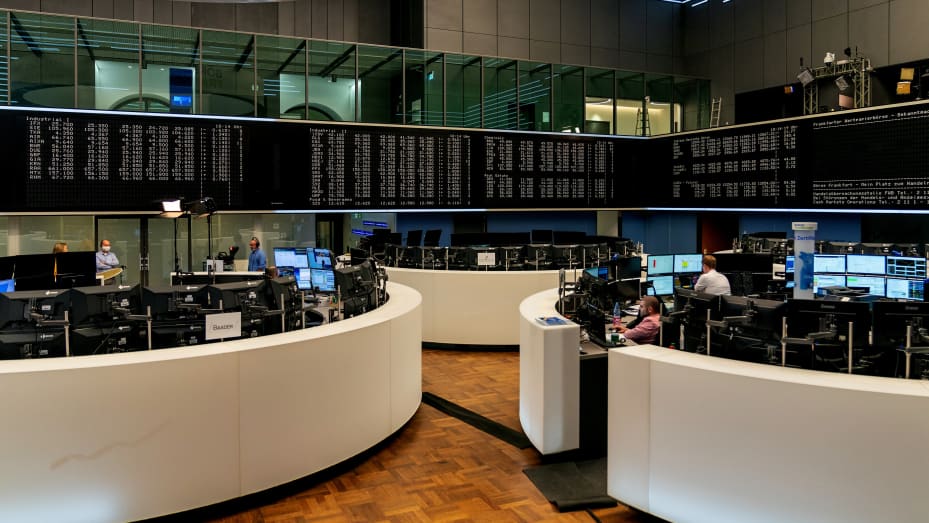
LONDON — European stocks started the final session of 2023 higher, marking a positive end to a solid year.
The regional Stoxx 600 index was up 0.26% in mid-morning trade, with all sectors in the green. Thin trade is expected, while London markets close early.
The blue-chip benchmark Stoxx is set to have gained more than 12% in 2023, according to LSEG data, just about reversing its 2022 loss.
Germany’s DAX has risen nearly 20% despite the country’s gloomy economic picture, while France’s CAC 40 and the U.K.’s FTSE 100 have gained 16.3% and 3.64%, respectively.
In the U.S., the S&P 500 index is chasing a new record high to cap off the rally of the last two months.
Latest data releases, including Thursday’s on jobless claims, continue to suggest U.S. economic growth is slowing without grinding to a halt. Market bets currently place a 72.8% probability on the Federal Reserve beginning rate cuts as soon as March 2024, CME’s FedWatch shows.
In the final readings of the year, U.S. annual headline inflation had slowed to 3.1% in November from 6.4% in January.
That compared with a drop to 2.4% from 8.5% in the euro zone, and to 3.9% from 10.1% in the U.K. — both of which have also fueled expectations of rate cuts next year amid sharp economic slowdowns in both economies.
“The apparent loss of U.S. economic momentum in late 2023 suits the view that the full impact of aggressive US Federal Reserve rate hikes may still be in the pipeline,” economists at Berenberg said in a note Friday.
“Nevertheless, the Fed remains on track to pull off the usually elusive feat of a soft landing in 2024. The easing of underlying inflation has encouraged bond and equity markets to play the Fed pivot theme,” they added, though they do not expect the first cut until May 2024.
Data on Spanish inflation will be released on Friday.
U.K. house prices recorded a 1.8% fall in the year to December, according to lender Nationwide, a bigger drop than recent polls suggested but significantly lower than calls made for a fall of up to 10% earlier in 2023.























